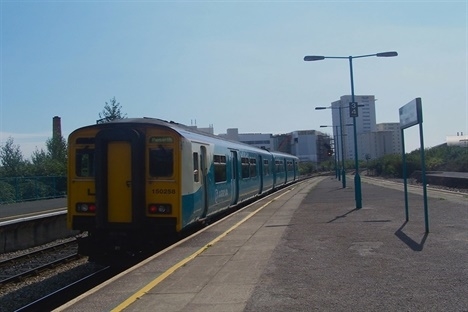The thing is TFW can't just plan against what may happen in the future, electrification has been planned then cancelled numerous times. The 175's and 180's were meant to be emus until the good old Tories cancelled the planned electrification of the North Wales coast line. Network rail projects always take a lot longer than planned and double in cost, so with that in mind TFW have to plan for the here and now.
The CAF 197's are a big step up from the current rolling stock, plus we will see them on routes in service by the end of this year. It's great to see such huge investment in the Wales and borders franchise at last & maybe future cascades of emus could help in the decarbonisation of the Welsh railways if electrification actually ever happens.
BIB
Do you have a source for this? I was not aware of any serious plans to electrify the routes used by these two classes and was under the impression that they were ordered during the 1997 Labour administration anyway.
Having travelled up to North wales many times since the 1970's either by train or by car from either Sussex or Berkshire, depending on where I was living at the time, I have never heard or seen any facts that electrification has been planned for the North Wales route. Many people have wanted electrification, but that is different to it being planned.
As Dr Hoo has stated, the building of the class 175/180 units was done between 1999 - 2001 and I believe that the order was put in late 1997 after the General Election that put Labour into power. Now I do think that discussions such as this that politics should be kept out of it. But I di know, with HS2 being built that the Welsh Government would like the North Wales Coast line amongst others to be electrified as per the future comment in the wiki page
https://en.wikipedia.org/wiki/North_Wales_Coast_Line and also mentioned by the fact that Rob Roberts MP for Delyn did ask the Secretary of State for Transport as per
https://www.theyworkforyou.com/wrans/?id=2020-02-27.22061.h about electrification of the North Wales train line. The Rail Minister Chris Heaton-Harris responded with the following "
There are currently no plans to electrify the
North Wales Coast Line.
The Department has funded extensive development work, through a series of Strategic Outline Business Cases (SOBCs) announced at the Autumn 2017 Budget, to identify where further investment into the Welsh rail network could make a real difference to the people and economy of Wales. Based on the findings of the SOBCs, we are taking enhancement proposals, including journey time improvements along the
North Wales Coast Main Line between Llandudno and Chester, through the Rail Network Enhancement Pipeline (
RNEP), subject to a better understanding and assurance of likely costs.
In addition, the
Network Rail-led Traction Decarbonisation Network Strategy is developing costed options about the use of electrification and new technologies. This work is a priority for the Department and for Network Rail. It will conclude this year to inform Government decisions about the scale and pace of further rail decarbonisation as part of our Transport Decarbonisation Plan."
You also have the comment within
https://www.railtechnologymagazine....th-wales-electrification-poor-value-for-money dated 5th march 2015, where Network Rail believes that electrifying the North Wales coast line would be poor value for money. This is the details "
network rail regulation and performance
05.03.15
Network Rail deems North Wales electrification ‘poor value for money’
Network Rail has proposed a number of capacity upgrades to the railway in Wales in the next control period and the longer term, including a major redevelopment of Cardiff Central station, improving line speeds and adding more capacity.
The proposals form part of the
Welsh Route Study Draft for Consultation, and provide funders with options for Control Period 6. However, electrification of the North Wales Coast Main Line, a much-cited priority for the Welsh government and regional authorities, has been deemed “poor value for money” by Network Rail.
The plans would deliver a fully electrified railway between North Wales and London, Liverpool (assuming Halton Chord is also electrified) and Manchester.
But the report says appraisals have been carried to out to asses assess the financial viability of various options for the North Wales Coast and the “options assessed represent a poor value for money case for investment in CP6”.
The study covers the railway in Wales as well as the bordering counties. It has been developed collaboratively with the Welsh government, the Department for Transport and train and freight operating companies.
Tim James, head of strategy and planning for Network Rail Wales, said: “Our railway is carrying almost 50% more passengers than we were 10 years ago and that number is predicted to grow significantly in the years ahead.
“Work we are already doing over the next five years will make a huge difference, including electrifying parts of the railway and installing new signalling to help deliver improved reliability and the potential for more and faster journeys. There is still more to do to meet future demand.
“The Welsh Route Study Draft for Consultation sets out a number of investment choices for funders to meet increased passenger and freight demand, including a major redevelopment of Cardiff Central station and plans to modernise the railway across North Wales. Investment across the route will help to improve journeys for passengers and help to build a bigger and better railway that Wales and the borders can be proud of.”"



